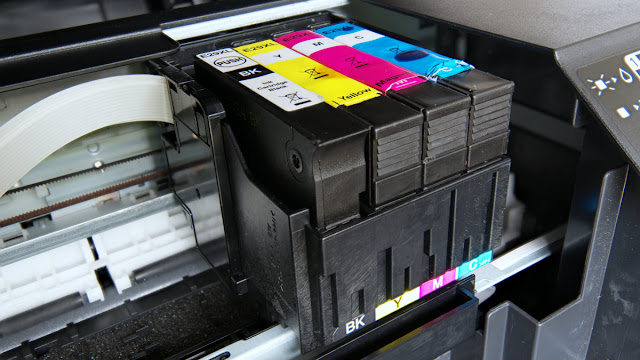TOP PRINTING TECHNOLOGIES YOU MUST AWARE OF!
The printing industry is undergoing significant changes as seen in other industries: digitization, modernization, data-based deciding, and other technology-focused shifts. These shifts represent the requirements of the fashionable consumer, which include the necessity to possess personalized printed materials as efficiently and quickly as possible.
And like other industry technology trends, the printing service and office supply tech environment is crammed, are extremely novel to most consumers. Additionally, office supply companies and vendors want to require advantage of those technologies without really knowing what they are doing.
Advanced technology can help businesses achieve certain goals like reducing inefficiencies, increasing ROI, and improving print quality across all departments. However, it's important to know which printing tech solutions are the foremost feasible during this day and age.
Here are the highest emerging printing tech trends that add up for many printing company businesses to pursue. A number of the technologies on this list are readily applicable to your business needs while others need just a touch longer to be developing.
Cyber security-enhanced printing:
Cyber security is one among the most well liked technology trends across all major industries but has direct applications to printing technology and software. Many printers are now equipped with enhanced encryption software, security measures, and even ID authentication to make sure that your printed materials and digital files are secured.
Cloud support on printers and printing software:
Cloud storage and sharing are an enormous a part of many businesses both small and enormous to efficiently transfer documents. MFPs and MFDs are beginning to roll out with the power to print documents from cloud storage with relative ease.
Digitally-integrated printing workflows:
Printing queues are already optimized on several MFP models with software which will organize printing queues. However, businesses should expect to ascertain models take these capabilities even further and integrate with project management software.
Smart MFD and MFP technology:
MFPs and similar MFDs can detect when toner ink is low and when certain sorts of documents won’t have enough ink to finish a print. Many printers and similar devices are rolling out with capabilities to use analytics, supported regular printing queues, to enhance printer efficiency.
AI-enhanced printing:
Artificial intelligence or “AI” may be a developing but steadily improving feature of MFPs. Soon though, businesses of all sizes should be ready to utilize MFPs which will automatically schedule your tasks like brochure printing and offer other automated features.
Print-supported digital whiteboards:
Digital whiteboards or “smart boards” are enhanced platforms that provide an equivalent usability as a white board but allow integration with programs like PowerPoint, anti-virus software, and similar tools to supply high-quality presentations. Print-supported smart boards can allow brainstorming session or meeting notes to be printed instantly from the content on the board to an MFP.
Advance speed, customized Inkjet printing:
Inkjet is already highly utilized within private household also as within small and enormous businesses. However, the necessity for more customized printing materials and specialized documents will see new enhancements in inkjet printing from MFPs.
Voice-activated printing:
Voice-activated technology is fairly new outside of Smartphone tech. But small consumer printers are likely to supply voice-activated poster printing that allows documents to print on command. Commercial MFPs are already on the cusp of creating this technology available for businesses.
Printer integration with other devices and technologies:
Most of the printers have only a little room for integration with other devices and just integrate with computer software. However, MFPs are poised to permit integration with other technologies seamlessly without the necessity for other software types.
Erasable printing technology:
This path breaking technology was introduced by the Japanese multinational Toshiba. This technology erases incorrect material that has been printed by employing a high-temperature heat plate. This protects both material and money.
Sheeted digital printing:
The growth of digital printing is not only in terms of technological advancements, it is in printing size too. Sheeted digital printing is one such technology that has been embraced by multinational companies. This technology will allow printing companies to print sheets that are on the brink of B2 size, that is, 707mm by 500mm.
Automation:
Believe it or not, printing is moving faraway from printing equipment, ink and paper to cross-vendor collaboration. With Print Industry 4.0, different printing machines are connected by data to streamline the manufacturing process for creating it more efficient and profitable.
Security printing:
With increased threats to the safety of the organizations, the necessity for foolproof security printing has become of paramount importance. To the present end, stringent steps are being taken for security, like inclusion of biometrics, advanced substrates, 2D bar-coding and unique links.
Conclusion:
The printing industry is rapidly changing thanks to the advances in evolving technologies. It’s up to the print industry players to quickly adapt to the present change and reinvent themselves, if they aim to survive and grow during this industry.




Comments
Post a Comment